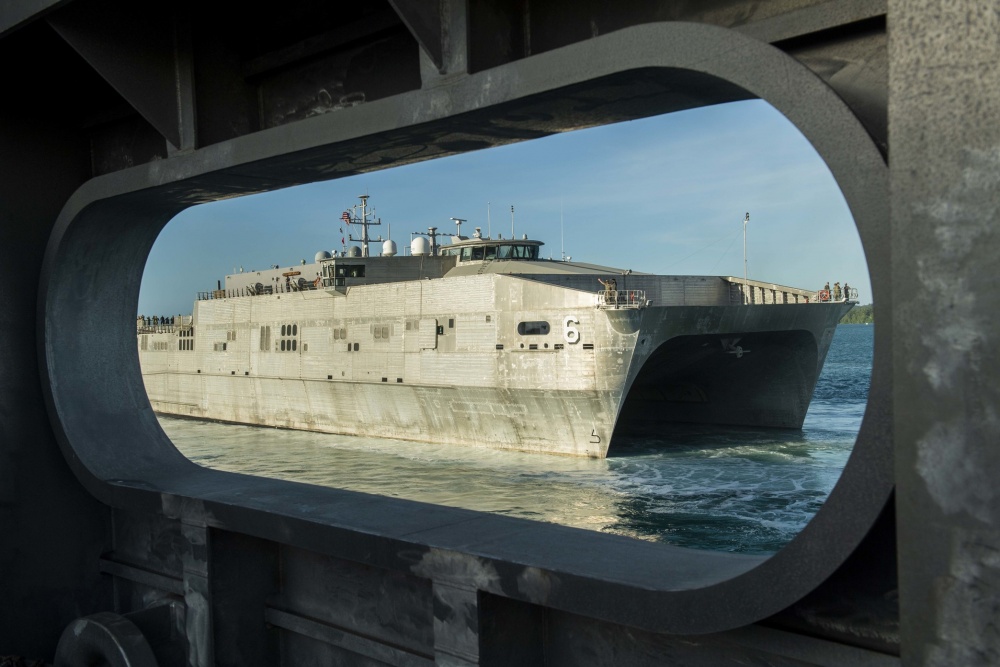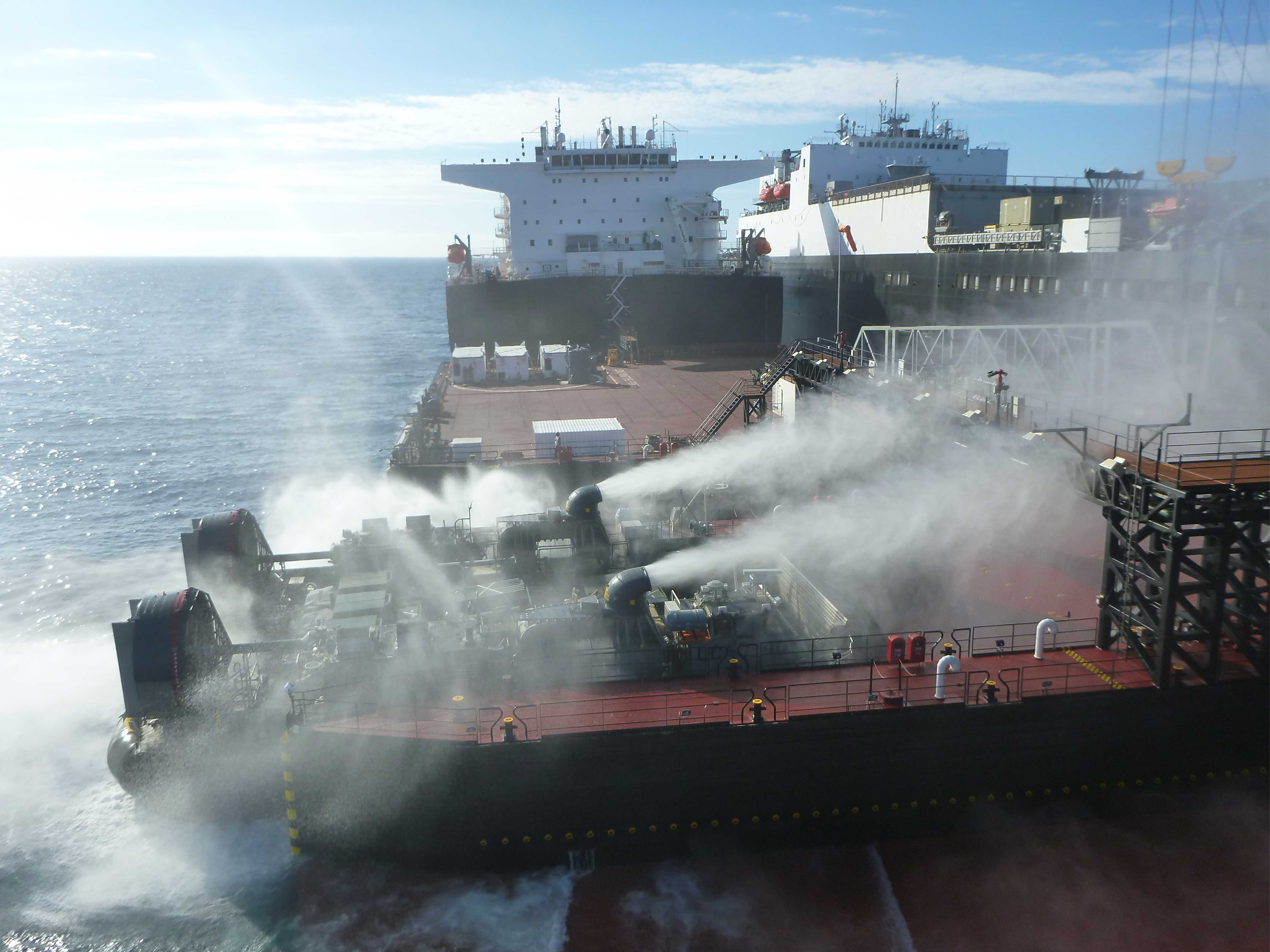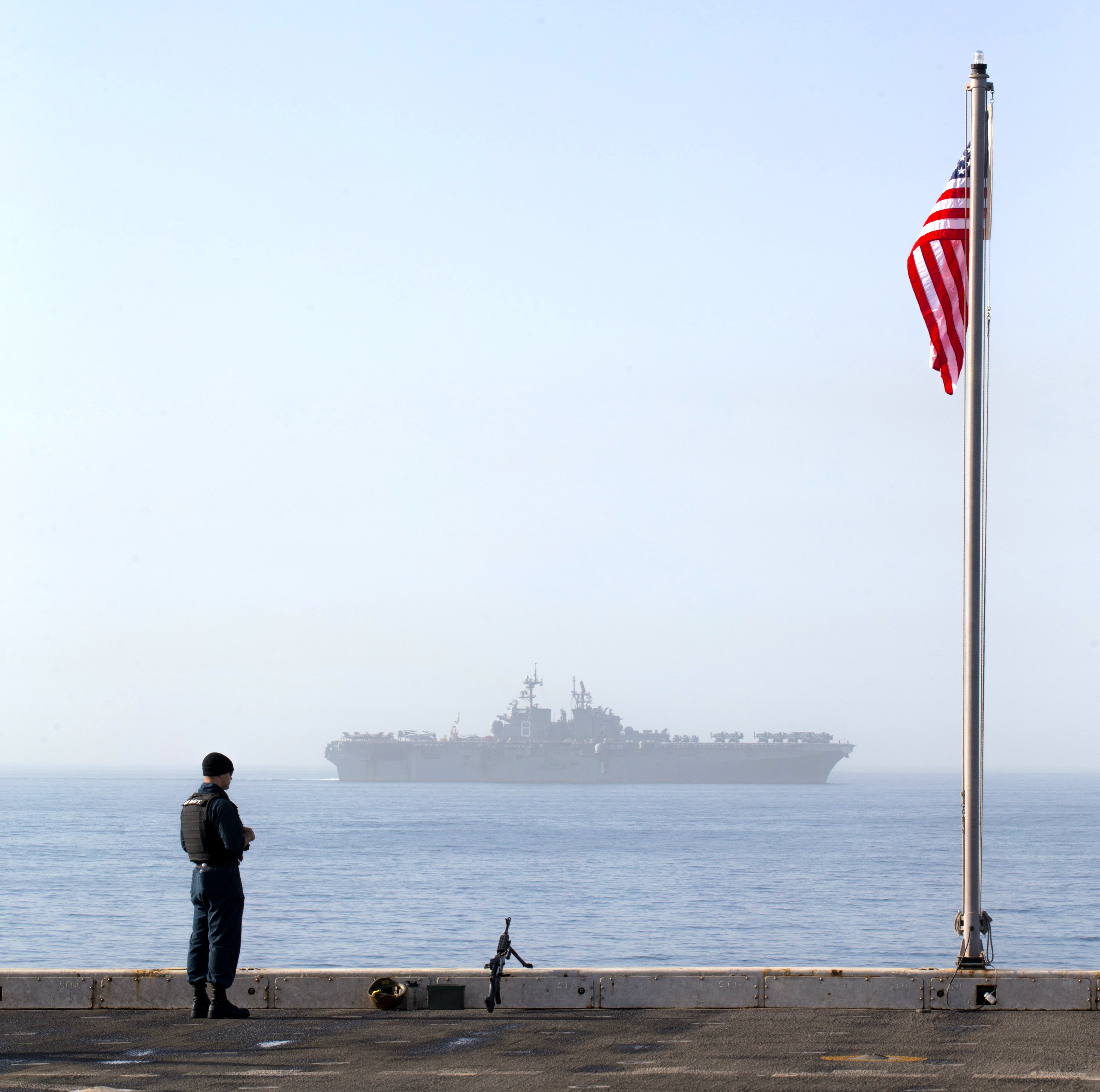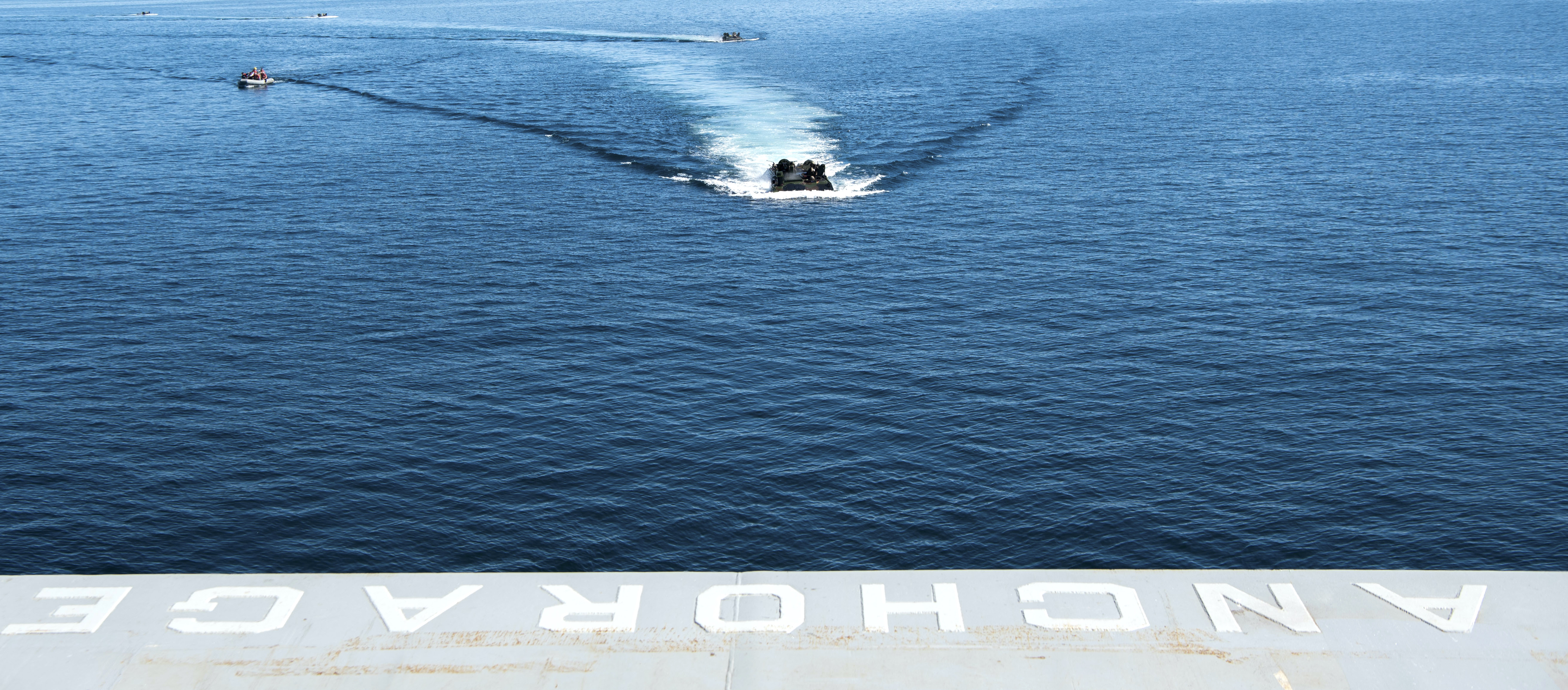
WASHINGTON D.C. — With the Light Amphibious Warship delayed by several years, the Marine Corps is looking to ship classes already in the fleet as an interim solution to move Marines around the Indo-Pacific.
The Marine Corps’ annual Force Design 2030 update, released on Monday, described plans to use the Expeditionary Fast Transport and Expeditionary Transfer Dock as temporary solutions while the Marine Corps refine the requirements for the LAW program.
“While we await the delivery of [Medium, Landing Ship], which post-dates the planned operational readiness of our MLRs, we will explore a family of systems bridging plan—including, Expeditionary Transfer Dock (ESB), Expeditionary Fast Transport (T-EPF), Landing Craft Utility (LCU), and leased hulls—that can provide a basic level of mobility. Although not optimal, such vessels will provide both operational capability and a sound basis for live experimentation and refining detailed requirements for the LAW program,” the latest Force Design 2030 document reads.
The annual update from Marine Corps Commandant Gen. David Berger details the service’s progress on its modernization overhaul, an effort to make the Marines lighter and able to operate with less of a footprint for distributed operations in a potential conflict with China.
Speaking Tuesday at the annual Modern Day Marine Conference, deputy commandant for combat development and integration Lt. Gen. Karsten Heckl said the Marine Corps has already signed a contract to lease a commercial stern landing vessel so the recently converted 3rd Marine Littoral Regiment out of Hawaii can experiment with the LAW concept. The Marine Corps will receive that ship this year during the late summer or early fall timeframe and will send it straight to the 3rd MLR for “aggressive experimentation,” according to Heckl.
“As you know, the LAW is a few years out. So we’re taking [the] opportunity to do some experimentation and refine the prototyping so that we get what we need – what the Marines need,” he said during a panel at the conference.
The Marine Corps has the option to lease two more vessels, which could help the service as it develops LAW, Heckl said. The Marines have said they need to purchase the LAW quickly, but the procurement has been delayed in the last two budget cycles. The Fiscal Year 2023 proposal now shows the first LAW purchase in FY 2025.

The Marine Corps envisions LAW as a shore-to-shore connector that can haul 75 Marines for $150 million or less per hull. Heckl said he believes ports and large runways will be among the first targets in a potential conflict in the Indo-Pacific, meaning the Marine Corps cannot rely on the ability to offload Marines and gear at a pier. This is where the LAW would come into play, as the ship would have beaching capability. Heckl said the Marine Corps needs 35 LAWs.
“We have five companies doing prototyping now, to figure out what it’s going to be,” he said of the LAW. “This is simply going to inform it and make it a better product. Now obviously having a gap is a risk and in the military world that’s usually bad. We don’t like that kind of risk, but I think there’s a lot of options out there,” like EPFs and ESBs, Heckl added.
The deputy commandant pointed to the Marine Corps using USNS City of Bismarck (T-EPF 9) last year for experimentation during the Koa Moana exercise in Palau.
“That’s a real capability I think we’ll want to keep around. A ship that can do 35 knots, carry a few hundred Marines and their gear with a flight deck … there’s a lot of options,” he said of the EPFs. “I think you’ll see when we get that contracted vessel out in Hawaii and we have the Marines in 3rd MLR and the III [Marine Expeditionary Force], we’re going to probably see great things,” he added.
As for the larger amphibious ships, Heckl again emphasized the Marine Corps’ 31-ship requirement – 10 big-deck LHAs and 21 LSDs or LPDs. As part of the next phase of the Force Design process, Berger called upon the Marine Corps Warfighting Lab to work on a “Concept for 21st Century Amphibious Operations” by January 1, 2023.
Asked about the concept on Tuesday during a roundtable with reporters, MCWL commanding general Maj. Gen. Benjamin Watson said the Marine Corps will work with the Naval Warfare Development Center on the effort because the concept is naval.
“We think it’s important that a lot of the early analytic work and a lot of the differences in Force Design have been focused on how do we operationalize this idea of a stand-in-force. But in doing that – just like the commandant addressed the fact that early we focused a lot on the Marine Littoral Regiment and perhaps not enough on putting that in the context of the MAGTF – we see the same thing with amphibious operations,” Watson said.
“Backing it out and taking a look at the range of amphibious operations from crisis response, in many cases at the lower end of the spectrum of conflict, all the way up to what is still a joint force requirement for forcible entry, within which we believe the Marine Corps then still has a requirement for amphibious forcible entry … We really need to take a look more holistically at the range of amphibious operations in concert with the Navy,” he added.
The construction of the Amphibious Ready Group and the Marine Expeditionary Unit has not changed over the last four decades while the battlefield has changed “dramatically,” Heckl said.

“On the low end of the spectrum – range of military operations – it largely looks the same. But as you progress up that escalation ramp, the divergence is significant,” he said.
“It used to be that when we got in the Marine Corps, we said, ‘25 nautical miles over the horizon, you’re safe.’ Not applicable today anymore so it’s got to change.”
The Marine Corps is also wrapping up an amphibious requirements study, but officials have been explicit in arguing the Navy needs 31 larger amphibious ships.
“That composition and the capacity of the future amphibious fleet does affect how we employ that amphibious force in the future,” Watson said.
As for the larger amphibious ships, Berger on Tuesday made a case for the various ways the Navy could use well decks on the amphibs to perform different missions.
“I think it’s much more versatile than we thought of in the past. As more and more uncrewed technology comes to maturity and the cost of production goes down, I think new capabilities are within reach,” Berger said. “Think for a minute. Marines aboard amphibious ships. That team – that Navy-Marine Corps team – employing unmanned underwater vessels from the ARG/MEU. Dozens of unmanned undersea vessels. You could use them as sensors, perhaps for anti-submarine warfare.”
Berger pointed to finding mines and performing counter-reconnaissance and ways to use the UUVs.

“They can be weapons themselves. We could also employ uncrewed surface vessels from the well deck, both for [intelligence, surveillance and reconnaissance] and for fires. You could do it for logistics,” he said. “Our initial experimentation with the Long Range Unmanned Surface Vessel – armed with loitering munitions, again all unmanned, largely autonomous – has demonstrated already the potency of that kind of capability. What if you operated decoys on the well deck? Electronic warfare capabilities from the well deck? Limited really only by your imagination is the well deck.”
Because what’s inside the well deck is hidden, Berger said an adversary will spend time trying to figure out what’s inside.
“It slows down their decision-making. That’s what we want. I think that’s applicable in the Mediterranean. I think it’s applicable in the Mideast. I think it’s applicable in the first island chain,” he said.





